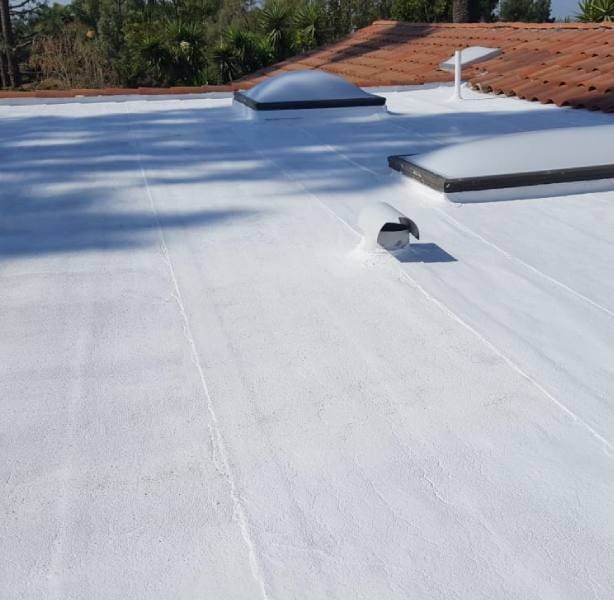What Time Of Year Is The Cheapest To Replace A Roof?
When it comes to home improvement, one of the most significant investments a homeowner can make is replacing their roof. It’s not just a matter of aesthetics; a solid roof protects your family and belongings from the elements. But when is the best time to dive into this project, especially if you're looking to save some bucks? In this article, we're going to explore what time of year is the cheapest to replace a roof, breaking down costs, seasonal benefits, and tips for finding the right roofers near me.
Understanding Roof Replacement Costs
Before we dive into seasonal specifics, let’s first understand the factors that influence roof replacement costs.
Factors Influencing Roofing Prices
Average Costs by Material Type
| Material Type | Average Cost per Square Foot | |-------------------|------------------------------| | Asphalt Shingles | $3 - $5 | | Metal Roofing | $7 - $12 | | Tile Roofing | $10 - $20 | | Wood Shake | $6 - $9 |

Knowing these factors can help you budget better when considering a roof replacement.

What Time Of Year Is The Cheapest To Replace A Roof?
So, let’s cut to the chase. What time of year is the cheapest to replace a roof? Most experts agree that late fall and early spring are generally the most affordable times for roofing work. But why is that?
Fall: The Hidden Gem for Roof Replacement
- Fewer Projects in Progress: Many homeowners rush to get their roofs done in summer or late spring—this leaves contractors with fewer jobs in fall.
- Stable Weather: Fall offers mild temperatures which are perfect for roofing materials to seal properly.
- Potential Discounts: Many roofing companies offer discounts as they try to fill their schedules before winter hits.
Considerations for Fall Replacements
- Make sure to schedule your replacement early in the fall before winter sets in.
- Be aware of potential weather disruptions such as rain or snow.
Spring: Another Great Option
Spring is another favorable time because:

- Contractors are often looking for work after winter slows down their business.
- Warmer temperatures allow materials to adhere better than in colder months.
Things to Keep in Mind for Spring Replacements
- Watch out for rainy days that could delay your project.
- Get ahead of other homeowners who are also eager for spring renovations.
Summer: The Peak Season
Now let's talk about summer—the most popular time for home improvements but not necessarily the cheapest.
Why Is Summer More Expensive?
Pros and Cons of Summer Replacement
-
Pros:
-
Long days provide more working hours.
-
Ideal weather conditions (most of the time).
-
Cons:
-
Higher labor costs due to demand.
-
Possible delays from afternoon thunderstorms.
Winter: Proceed with Caution
You might think winter would be an affordable option since affordable roofing services Renton few people want to replace roofs during freezing temperatures—but it’s tricky!
The Hidden Costs of Winter Replacements
Potential Benefits of Winter Work
If your situation is urgent (for example, a leak), some contractors may offer discounts during off-seasons—just remember that you’ll need a reliable team experienced in cold-weather installations.
Finding Roofers Near Me at Any Time of Year
No matter when you decide it's time for that new roof, finding quality contractors is crucial!
Tips for Finding Reliable Roofers Near Me
Additional Considerations When Timing Your Roof Replacement
Timing isn’t everything; there are other factors you should consider when planning your roofing project:
Local Climate Impact on Roofing Timelines
Your local climate heavily influences the best timing for roofing projects:
Personal Circumstances Affecting Timing
Don’t forget personal circumstances! If you’re planning big family events or vacations, consider how these will affect scheduling your roofing project.
Common Questions About Roof Replacement Timing
Let’s address some FAQs many homeowners have regarding roofing replacements:
1. Can I replace my roof myself?
While DIY projects can save money, roofing requires specialized skills and safety precautions best handled by professionals—so think twice!
2. How can I tell if my roof needs replacing?
Look out for signs like missing shingles, leaks inside your home, sagging areas, or mold growth—these are indicators that it might be time for replacement!
3. Should I repair or replace my roof?
This largely depends on the extent of damage! Minor repairs may suffice; however, significant issues may warrant full replacements—consult with professionals!
4. How long does a new roof last?
Most asphalt shingle roofs last around 20 years; metal roofs can go upwards of 50 years if maintained well!
5. What’s included in a roofing estimate?
Estimates typically include inspection fees (if applicable), material costs (shingles), labor rates (what you pay workers), disposal fees (for old materials), etc.—clarify with your contractor!
6. Are there seasonal discounts available?
Many contractors offer discounts during off-peak seasons like late fall or winter—be sure to ask around!
Conclusion: Timing Your Roof Replacement Wisely
In summary, finding out what time of year is the cheapest to replace a roof boils down primarily to two seasons—fall and spring! While summer brings its perks with ideal working conditions and longer days, it also tends to be pricier due mainly due demand pressures affecting labor rates—and winter poses its own challenges too!
Whatever season aligns best with your needs—and whatever type of material fits within budget—make sure you do thorough research when selecting qualified local professionals by exploring reviews online as well as seeking recommendations from friends/family members alike! Remember—the goal here isn’t just saving money but ensuring quality craftsmanship goes into protecting one of your biggest investments—your home!